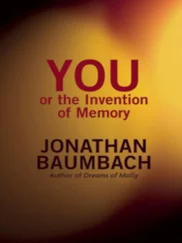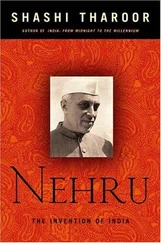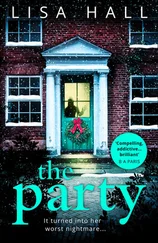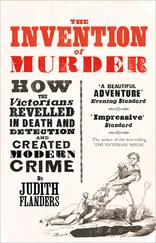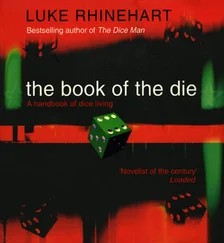This meant accepting the newly dominant social policy problematic centering on the twin priorities of ending “welfare dependency” and enforcing “individual responsibility,” to the neglect of the continuing deterioration of the low-wage labor market, the shrinking of the social safety net, and the sharp rise in class inequality. There is thus a direct affinity between Auletta’s racialized enumeration of behavioral misfits and the individualistic and moralistic conception of social problems adopted by policy institutes in their effort to remain relevant. Indeed, we will see later that economists from the center-left Urban Institute played the lead role in “behavioralizing” the technical definition of the “underclass.” In taking this path, O’Connor writes, liberal policy analysts “actively participated in what they hitherto had been trying to avoid: they repauperized the poverty problem and heightened the distinction between the ‘undeserving’ and the ‘deserving’ poor,” and they fostered “the revival of a frankly pathologized vision of poverty” in the guise of the “underclass.” 42
Philanthropic foundations contributed decisively to the diffusion of the “underclass” as scholarly object and policy objective: once the term had perked up in public debate, they pounced on it and swiftly financed the investigative infrastructure that made it an academic household name. 43The sudden profusion of funding, research programs, fellowships, conferences, and databases, in turn, seemed to offer proof positive of the existence of the group. Thus, in 1989, Peter Goldmark, the new president of the Rockefeller Foundation, made a media splash by announcing that the foundation was launching a major new program of research and intervention targeted at America’s “underclass”:
These are the people government and everyone wants to forget . . . We are talking about the one or two million Americans alienated from all the mainstream institutions. They don’t just do badly in school; they are out of school. Many are not on welfare; they are hustlers. Many are responsible for much of the antisocial behavior that goes on in our cities.
There was an urgent need for up-close empirical investigation, because “the underclass is not a topic to pursue from the library. You get out and look for them .” A major plank was to draw top researchers to the topic, which they must approach with a definite sense of mystery and foreboding:
They are a very special group within the poor community . . . Nobody knows who they are, what they do, how they stay alive or why they are so totally cut off from institutions of American life. The only institution they come in contact with is the criminal-justice system. 44
“It is not easy to say how they live”
“[They] consist mostly of casual labourers of low character, and their families, together with those in a similar way of life who pick up a living without labour of any kind. Their life is the life of savages, with vicissitudes of extreme hardship and occasional excess. . . . It is not easy to say how they live. . . . These are the worst class of corner men who hang around the doors of public houses, . . . the ready materials for disorder when occasion serves. They render no useful service, they create no wealth: more often they destroy it. They degrade whatever they touch, and as individuals are perhaps incapable of improvement.”
Charles Booth, Life and Labour of the People in London (1892), p. 38
In addition to stimulating social research, the Rockefeller foundation planned to fund “community development corporations” to work on neighborhood renewal from within and groom a generation of grassroots leaders because “what typifies the underclass neighborhood is total absence of leadership, total absence of role models, absence of anything positive.” A first multi-million-dollar subsidy would go to the Local Initiatives Support Corporation, an organization spawned in 1980 by the Ford Foundation.
From 1988 to 1993, the Rockefeller Foundation allocated $6 million in support of a multifaceted program at the Social Science Research Council (SSRC) “designed to stimulate interdisciplinary research on the origins and persistence of concentrated urban poverty in the United States” and “to create a cadre of young scholars that can further advance the state of knowledge about the urban underclass.” This endeavor was spearheaded by a committee of distinguished scholars (chaired by Harvard political scientist Paul Peterson), leading working groups tasked with sponsoring workshops and conferences and with commissioning studies on the low-wage labor market, drugs and crime, and families in very poor neighborhoods as well as on “the historical origins of the underclass.” In 1992, the foundation was pleased to report on the success of the SSRC Committee for Research on the Urban Underclass in its Annual Report :
When the Foundation asked the SSRC to mount this effort, there were only four major academic centers of research on poverty issues in this country, and only 36 of 250 students completing dissertations in relevant areas between 1980 and 1986 described their research as being concerned with the urban underclass. Since 1988, SSRC has awarded 70 undergraduate assistantships, 35 slots in summer dissertation workshops, 23 dissertation awards, and 15 postdoctoral fellowships. Today there is a community of over 100 senior scholars, and as many young scholars, doing research at more than 60 universities. The intellectual output to date includes 16 research studies, 26 commissioned papers, 45 research articles, and an urban underclass database containing over 6,000 social, economic, demographic, and health indicators that has been used already by the U.S. Department of Housing and Urban Development in preparing a major report to the President on national urban policy. 45
For the year 1992 alone, the Rockefeller foundation issued $1.2 million to the Social Science Research Council “to continue support for the SSRC’s five-year program to mobilize the academic community for interdisciplinary research on the underclass,” including $625,000 to provide fellowships and training “aimed at developing a cohort of younger scholars concerned with the study of persistent poverty and the underclass”; $260,000 to the Joint Center for Political and Economic Studies, an established black-issues think tank, to “continue support for its policy analysis and dissemination activities on issues of persistent poverty and the underclass”; and $6.8 million to the Urban Institute “to continue support for its policy research on the urban underclass and dissemination of the findings to policy makers, community leaders and the media.” 46
Not to be outdone, in 1998 (at a time when the shine of the question was fading), the Ford Foundation launched the Research and Training Program on “Poverty, the Underclass, and Public Policy,” based at the University of Michigan in Ann Arbor, with joint support from the university’s Presidential Initiatives Fund Award, offering two-year “postdoctoral fellowships to American minority scholars in all the social sciences.” The fellows would start by taking a course crosslisted in social work, public policy, and political science, SW486, taught by professor Mary Corcoran, entitled “Poverty, the Underclass and Public Policy” probing the questions “What is poverty? Who is in the underclass? Why is poverty so persistent? Why are poverty and unemployment rates for minorities so high?” Another generation of doctoral students would thus get indoctrinated in the category and help it endure in the academy.
1 1. Robert Castel, “La ‘guerre à la pauvreté’ et le statut de l’indigence dans une société d’abondance” (1978); Michael B. Katz, In the Shadow of the Poorhouse: A Social History of Welfare in America (1996); and Stephen Pimpare, The New Victorians: Poverty, Politics, and Propaganda in Two Gilded Ages (2004).
Читать дальше

